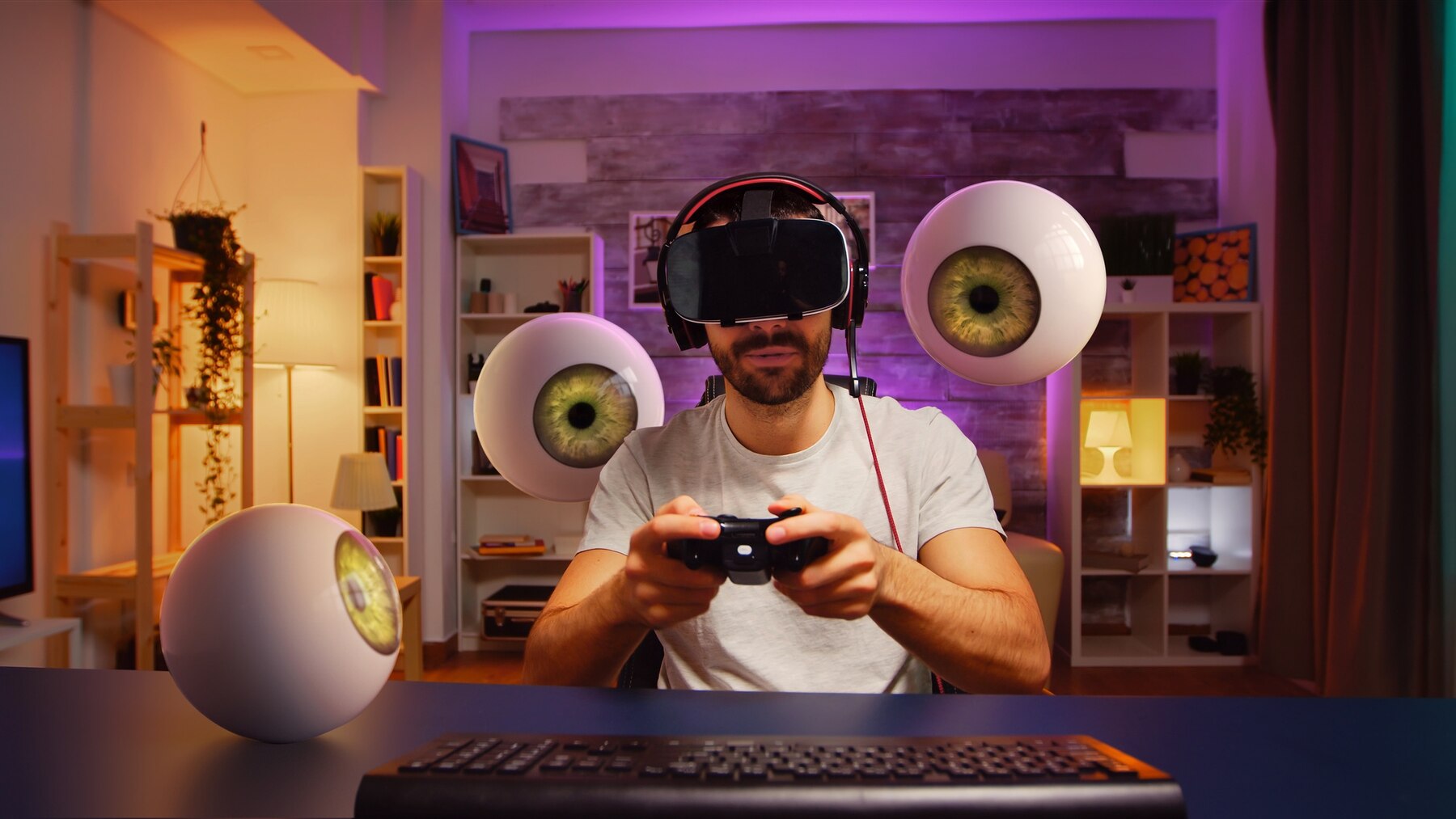
VR vs. AR Gaming: What’s the Difference?
In the fast-changing gaming world, two technologies stand out: Virtual Reality (VR) and Augmented Reality (AR). Both provide unique experiences that challenge traditional gaming. So, what makes them different? This guide looks at the debate between VR gaming and AR gaming. We’ll look at the best virtual reality games and the rise of augmented reality gaming. Each technology changes how we play.

Understanding VR Gaming
Virtual Reality gaming immerses players in fully digital environments. When you wear a VR headset, you enter a new world. You might explore alien planets, fight zombies, or paint in 3D space.
Key Features of VR Gaming:
- Immersion: VR creates an all-encompassing environment where everything you see and hear is generated by the game.
- Interactivity: Players use motion controllers, haptic gloves, or even full-body trackers to interact with the virtual world.
- Best Virtual Reality Games: Titles like Half-Life: Alyx, Beat Saber, and The Walking Dead: Saints & Sinners have redefined what immersive gameplay means.
VR gaming is perfect for those who want to escape reality entirely and dive headfirst into new worlds. The sense of presence and depth makes every experience feel incredibly real. VR games provide amazing immersion. Features like room-scale tracking and hand-tracking let players walk around and engage with the environment as if they are really there. From slashing cubes to the rhythm in Beat Saber to solving mind-bending puzzles in The Room VR: A Dark Matter, VR gaming promises an experience unlike any other.
Moreover, VR hardware has advanced rapidly in recent years. Devices like the Meta Quest 3 and PlayStation VR2 provide wireless freedom and better resolution. This makes the experience easier and more fun. Multiplayer VR games have helped people connect socially in virtual spaces. This has made gaming a shared experience for players around the world.

Understanding AR Gaming
Augmented Reality gaming, on the other hand, blends digital elements with the real world. Using devices like smartphones, AR glasses, or headsets, virtual objects are overlaid onto your surroundings, creating a hybrid experience.
Key Features of AR Gaming:
- Integration with Reality: AR games enhance the real world with digital objects and characters.
- Accessibility: Most AR games only require a smartphone or tablet, making it more accessible than VR.
- Popular AR Games: Games such as Pokémon GO, Minecraft Earth, and Harry Potter: Wizards Unite have brought augmented reality gaming to millions.
AR gaming suits people who like to explore their surroundings, solve puzzles, or take part in location-based activities. The charm of AR gaming lies in its ability to turn everyday surroundings into a playground. Pokémon GO gets players to walk in their neighbourhoods. Parks, landmarks, and streets become real arenas for capturing creatures. The best augmented reality games use real spaces. They promote movement and exploration in ways that VR can’t.
As AR technology evolves, we’re seeing more sophisticated applications beyond mobile devices. AR glasses and headsets, such as Magic Leap and Microsoft HoloLens, aim to enhance augmented reality gaming. They do this by blending digital interfaces with our view of the real world. You might find yourself fighting digital monsters in your living room or solving puzzles on city streets. The options are limitless.
VR Gaming vs AR Gaming: Key Differences
While both VR and AR offer groundbreaking experiences, they cater to different playstyles and preferences. Let’s break down the key differences:
- Level of Immersion: VR gives total immersion, blocking out the real world. AR, on the other hand, improves your current surroundings. VR demands players to fully step into the game, often requiring a dedicated space, while AR complements the physical space you’re already in.
- Hardware Requirements: VR gaming needs special gear like headsets and sensors. It may also require powerful PCs or consoles. In contrast, AR usually just needs a smartphone or tablet.
- Movement and Space: VR needs a specific play area for room-scale experiences. In contrast, AR can be enjoyed almost anywhere — in your living room, at a park, or on a city street.
- Game Design: VR games aim for total immersion. They often include exploration, combat, and puzzles that use 360-degree tracking. AR games, meanwhile, build on the player’s environment, layering digital elements onto the physical world.
- Social Experience: VR gaming can feel isolating since players are lost in their own worlds. In contrast, AR gaming encourages social interaction by creating shared experiences in public spaces.
Which Is Right for You?
Choosing between VR gaming vs AR gaming depends on what kind of experience you’re looking for.
- Choose VR Gaming if you crave total immersion, cutting-edge technology, and games that transport you to new worlds. VR gaming is perfect for players who want to escape reality and fully engage with environments that feel alive.
- Choose AR Gaming if you like mixing reality with digital fun, exploring outside, or playing games with little gear. Augmented reality gaming suits players who love exploring the real world and having interactive fun with friends or even strangers.
Whether you want a solo adventure in magical realms or to enjoy time with friends in the park, both technologies provide something special and fun.

The Future of Gaming
As technology evolves, the line between VR and AR is beginning to blur. Mixed Reality (MR) and Extended Reality (XR) are taking things to the next level. They promise even more immersive experiences. Devices like Microsoft’s HoloLens and Meta’s new AR/VR headsets suggest a future. In this future, players can quickly switch between virtual worlds and augmented reality.
In the VR gaming vs AR gaming debate, there may not be a clear winner — only what resonates most with you as a player. Virtual reality games and augmented reality experiences are changing how we play. You can dive into exciting VR worlds, swing lightsabers in Vader Immortal, or catch Pokémon in the wild. These technologies offer thrilling adventures like never before.
So, where do you stand? Do you love exploring virtual worlds, or do you enjoy adding digital magic to your real life? Share your thoughts below and join the conversation!
